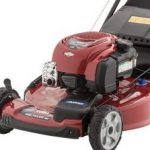When you purchase a home, it already includes a lawn of grass. It may be assumed by some that there is no other alternative. When grass doesn’t grow in shade
or does not flourish in certain types of soil, then the temptation for many is to spend a lot of time and money fixing the soil or using other species of grass.
Moreover, there are regions of the country where the climate is not ideal for grass. For example, grass needs lots of water, but there are regions of the country where water is not plentiful.
Maintaining a nice luscious green lawn can also take a lot of time and money that you don’t want to spend. For example, a nice lawn is going to need a lot of fertilizing.
You may not be aware of it, but there are alternatives to grass. Many require less work, less water, and less fertilizer. Some may not require any mowing.
Such examples as moss, thyme, yarrow, and chamomile are great substitutes for grass. Although these alternatives are not as durable as grass and will not withstand a soccer match, they can prove ideal for low traffic areas of your property.
If you have to opt out of grass, but you already have a lawn that’s full of it, then getting rid of it and planting an alternative can be a major chore. You may not want to take the time or spend the money. However, if you do, many lawn care experts assert that it is well worth the investment. If you take the time to do things right, than an alternative can look far better than struggling grass.
Alternatives to grass include:
· Ornamental Grasses
· Plants that love shade
· Plants that love sun
· Low water ground covers
· Acid-Tolerant Plants
Ornamental Grasses
Although their descriptive name includes “grass,” ornamental grass is actually a different species than turf grass. For one thing, they don’t require mowing. They grow into unique shapes including tufts and sprays as well as stands or flowing and shimmering sweeps. They do not droop, but stand upright and hold a lure through cold weather and even snow.
There are variations of these grasses that bunch or clump because the roots don’t spread out horizontally so they can’t start new plants. These grasses depend on seeds to reproduce. These grasses and turf like fescues actually blend together to form a smooth, continuous surface. However, ornamentals tend to create tight, well defined bunches. Individual grass plants gradually grow larger as new shoots grow around the base of the parent plant with each individual plant retaining its integrity.
Although ornaments are considered invasive, they can be controlled if planted in a region that has an environment that is suited for them. For example, prairie grass is considered non-invasive. However, if present in a region where the season is longer and there is a lot of water, they become invasive.
The most offensive invasive species are known as running or creeping grasses. They do not bunch.
Clumping grasses can stay in check, but you need to select one that is appropriate to the region in which you live. You still have to tend to it to make certain that it
will not produce an extreme amount of seeds. Just be certain not to over water and don’t grow a cool-season grass in a warm season region. Plant the ornamental grass through professional-grade weed barrier and cover with mulch. The fabric will keep weeds and seeds, even seeds from the grasses, out. The wind and drift may still pick up the seeds, but they won’t affect your immediate area.
If you are reluctant to opt for ornamental grasses because of their reputation as being invasive, then select a sterile strain of ornamental so that it can’t spread regardless of how many seeds it produces.
Some popular ornamental grasses include:
· Feather Reedgrass
· Fountaingrass
· Little Bluestem
· Big Bluestem
· Switchgrass
· Blue Oatgrass
· Purple Millet
· Cordgrass
· Japanese Forestgrass
· Maidengrass
· Fiber Opticgrass
· Ravennagrass
· Purple Fountaingrass
· Northern Sea Oats
· Zebragrass
· Purple Moorgrass
· Hairgrass
· Blue Fescue
· Dwarf Pampasgrass
· Liriope
· Rush
· Mexican Feathergrass
Again, choose the ornamental grass that is appropriate for your region.
(Next time: Plants that love shade)









